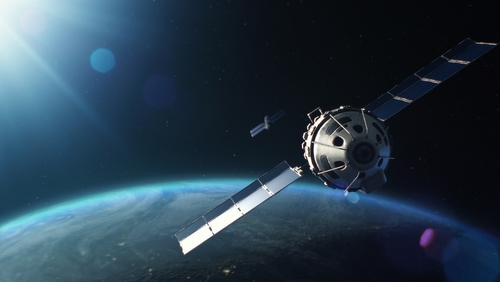Direct to Device: mobile coverage everywhere coming soon?

This lack of mobile coverage can be a disappointing at a time when we are becoming increasingly dependent on smartphone applications on a daily basis. Natural disasters can also lead to mobile network failure. Addressing outdoor coverage, a solution is now taking shape: "D2D".
Two letters and a number for a new acronym?
Technological developments, resulting from progress in standardisation, now mean that you can receive a satellite signal on the same smartphone that you use every day on mobile networks. This is known as "direct to device" or D2D communications. This innovation overturns ecosystems that have been established for decades, with terrestrial and satellite mobile services having evolved in parallel. Mobile services benefit from standardisation, enabling global roaming and operator switching, while until now satellite services rely on specific networks and proprietary terminals. Today, new business models are emerging that offer a combined mobile/satellite service, such as Globalstar in partnership with Apple [1] or the Starlink or AST Space Mobile systems in cooperation with mobile operators D2D thus became one of the major topics s of the latest Mobile World Congress in Barcelona.
Studies and opinions
These new services raise international issues in the field of radio spectrum. They are part of WRC-27 studies under agenda item 1.13 and will be also subject to activities targeting an harmonised regulatory framework in Europe. In response to a request of an Opinion from the European Commission, the Member States within the RSPG have recently published their analysis and recommendations on the various D2D components: D2D opinion and access to the EU market .
This Opinion distinguishes between D2D in the mobile operator bands ("D2D-IMT") and D2D in the authorised satellite bands ("D2D-MES"). It also details the case of Internet of Things (IoT) applications, either in the MSS bands below 1 GHz ("D2D-IoT-MSS") or in harmonised bands for low-power devices ("D2D-IoT-SRD").
When using D2D-IMT, the protect mobile networks and other radio services in adjacent bands and at borders is the main challenge to be addressed. Cross-border issues are under study for WRC 27, but it also seems appropriate to consider this protection in the future European harmonised technical conditions to be established by 2027/28. The European Commission therefore intends to grant to CEPT a study mandate for this purpose. Subsequently, depending on market demand, these harmonised technical conditions could be included in the licences of mobile operators providing D2D services in in partnership with a D2D satellite operator. This authorisation model is the preferred approach of Member States taken into account mobile authorisations currently in force: in practice, the mobile operator would free up part of its licensed radio spectrum for a D2D use. In case, of available spectrum resources in terrestrial mobile bands, a a licence award to a D2D operator remains possible.
D2D-MES services had already been addressed by previous RSPG Opinion on MSS 2GHz. In this frequency band, current licences granted to Viasat/Inmarsat and Solaris/Echostar expire in 2027, and this issue is currently triggering some work between Member States and the European Commission [2] . For the other frequency bands, Member States are invited to better identify satellite operators likely to operate on their territory, including through authorisations or registration procedures. In order to reduce the constraints on the deployment of L-band SDL mobile networks in ports and airports, the need to improve MES receivers blocking for terminal operating above 1518 MHz has been raised once again.
Communications between low-power devices and satellites (D2D-IoT-SRD) have been already subject to studies at European level (CEPT) triggering harmonising technical conditions. This Opinion proposes to transpose these technical conditions at EU level leaving CEPT to draw up and maintain a list of satellite operators respecting the relevant harmonised technical conditions. Authorisation framework remains under the responsibility of each Member State, taking account of a shared use with other short-range devices (SRD) already covered by general authorisations framework.
D2D uses in MSS bands below 1GHz remains a niche market for IoT-type applications. Current CEPT's voluntary harmonisation measures are considered to be sufficient to support the growth of this market.
The lessons and results of WRC-27 on agenda items 1.12 (D2D-IoT) and 1.13 (D2D-IMT), which also address with these issues, have to be analysed in due course in order to update, if necessary, current harmonised technical conditions in accordance with the international regulatory framework.
Finally, this response to a request from the European Commission highlights other issues relating to D2D uses beyond frequency management. Some have to be considered at national level, such as lawful interception, security or sovereignty; others have to be addressed in conformity with the European regulatory framework such as resilience, emergency communications, competition, protection of personal data or cybersecurity.
[1] support.apple.com/fr-sn/122339
[2] See 2GHZ RSPG MSS opinion Document RSPG24-007

